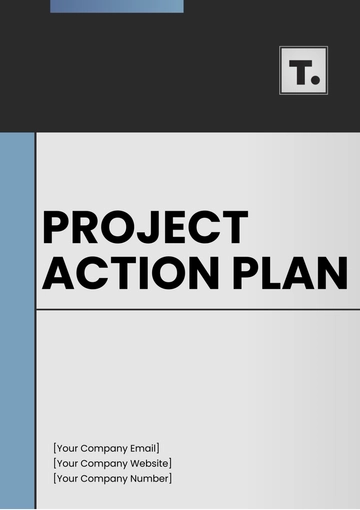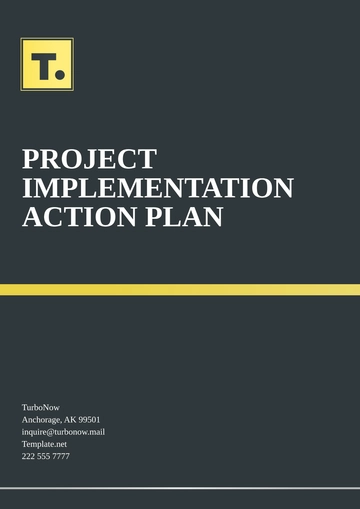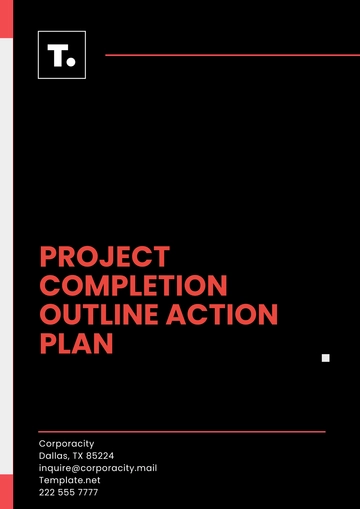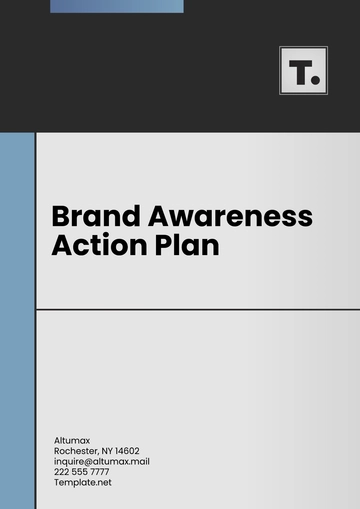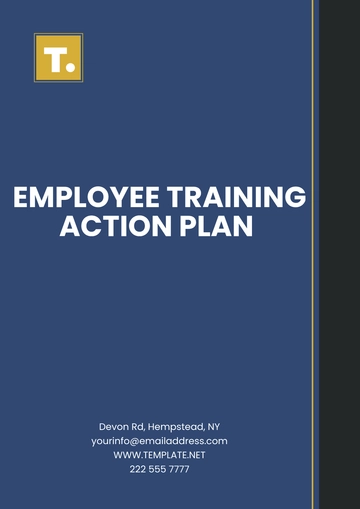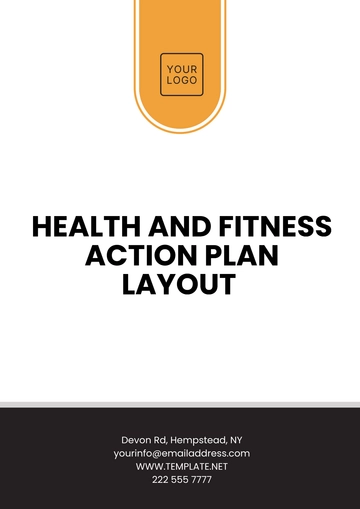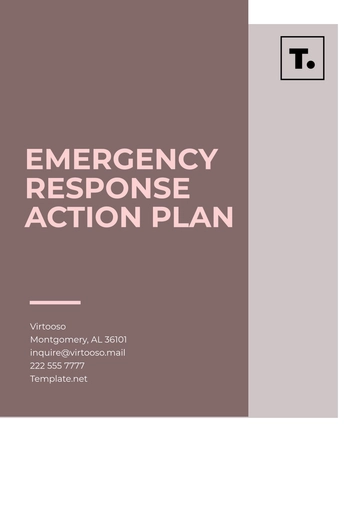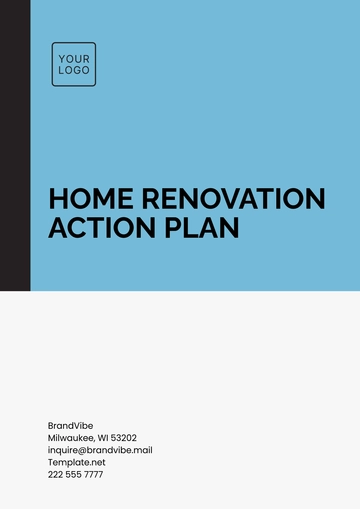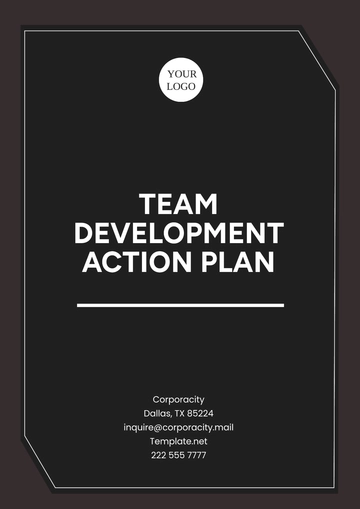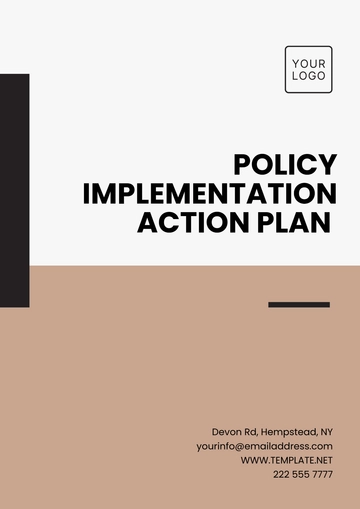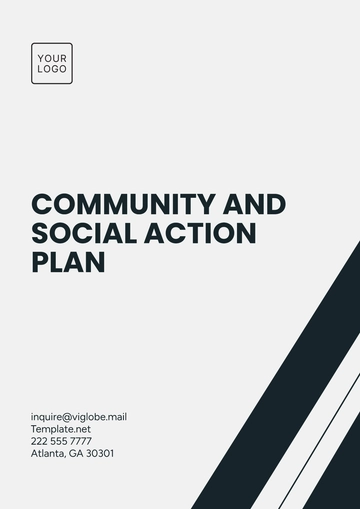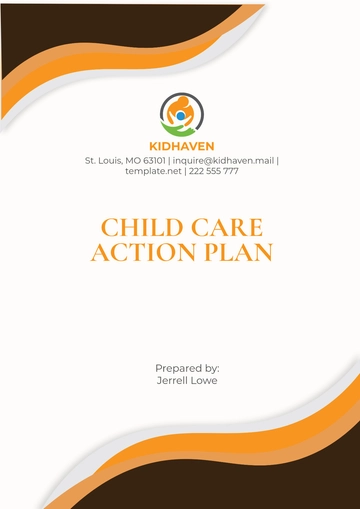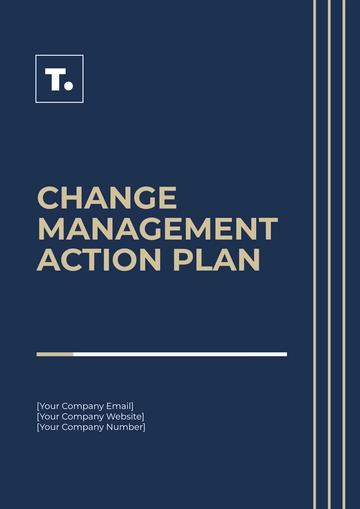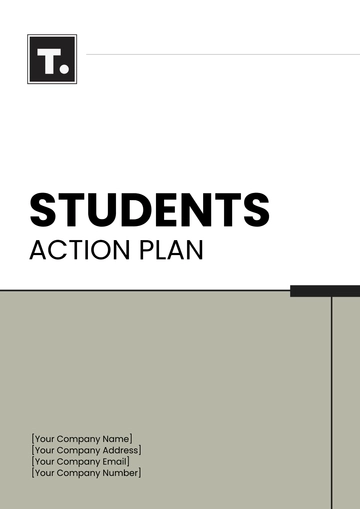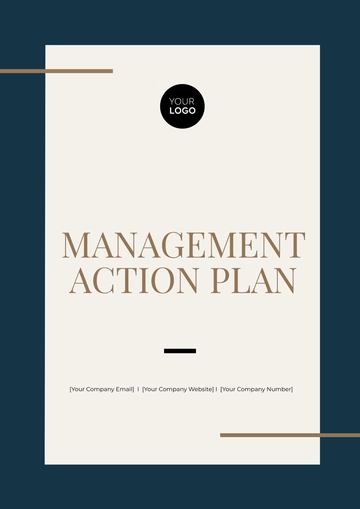Free Nursing Home Action Plan
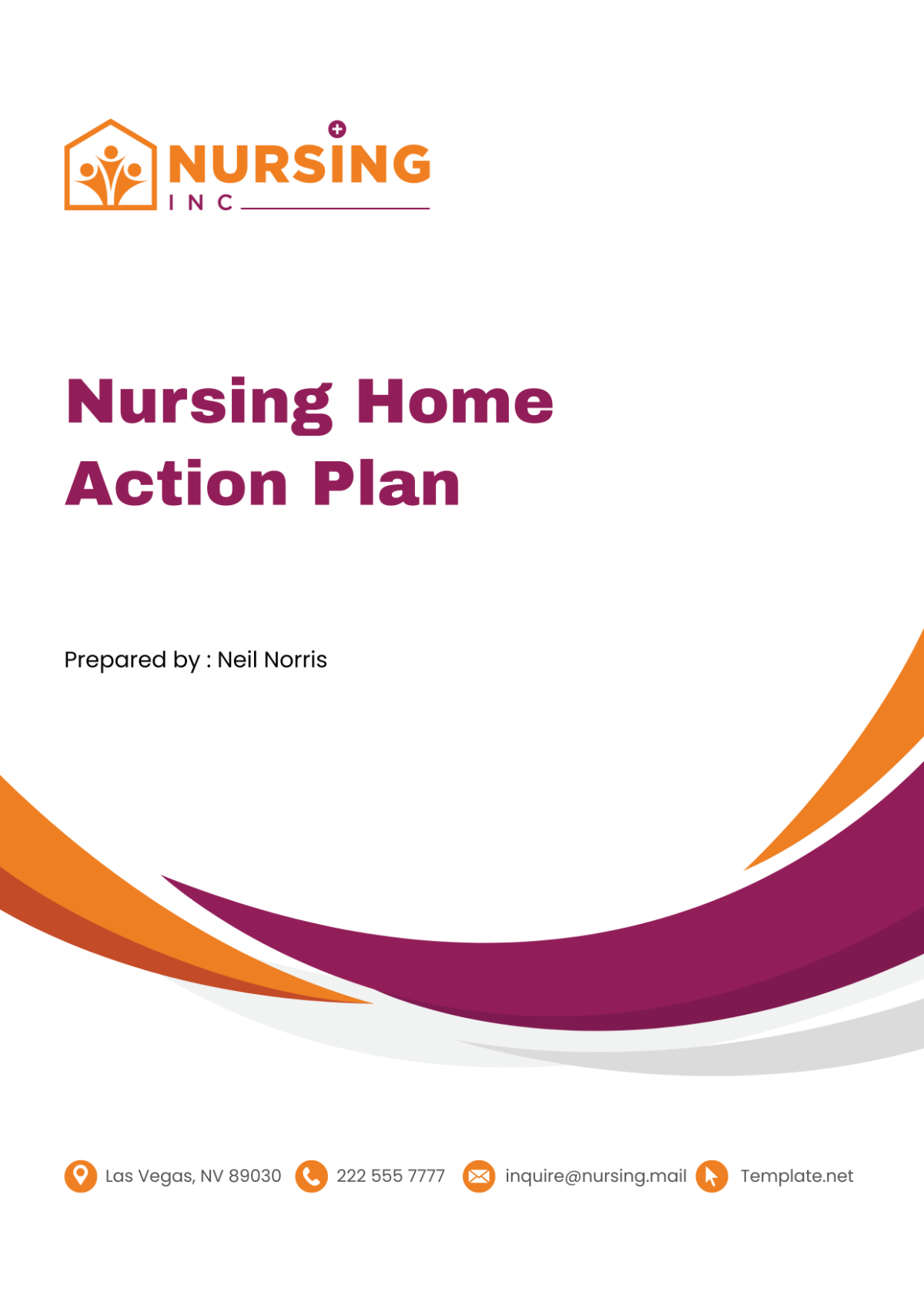
I. Introduction
A. Purpose
The purpose of this Nursing Home Action Plan is to ensure the safety, well-being, and quality of care for residents at [Your Nursing Home Name]. It aims to provide a comprehensive framework for managing various aspects of nursing home operations, including emergency preparedness, infection control, staff training, resident care, and communication protocols.
By establishing clear procedures and protocols, this action plan seeks to minimize risks and enhance the overall quality of life for residents. It serves as a guiding document for staff members, outlining their responsibilities and actions in different scenarios to maintain a safe and supportive environment for residents.
B. Scope
This action plan encompasses all departments and staff within [Your Nursing Home Name] and outlines procedures to address potential risks and emergencies. It covers the following areas:
Emergency preparedness and response: Ensuring staff readiness and effective response to emergencies such as natural disasters, fires, power outages, and infectious disease outbreaks.
Infection control measures: Implementing strategies to prevent and contain the spread of infections within the nursing home facility.
Staff training and education: Providing ongoing training and education to staff members to enhance their skills and knowledge in resident care and safety practices.
Resident care practices: Developing individualized care plans and implementing fall prevention measures to promote the health and well-being of residents.
Communication protocols: Establishing clear communication channels with residents, families, staff members, and external stakeholders to facilitate information sharing and coordination during emergencies.
The scope of this action plan extends to all residents, staff members, visitors, and stakeholders associated with [Your Nursing Home Name]. It is designed to be adaptable to various scenarios and to promote a culture of safety and quality care throughout the facility.
II. Emergency Preparedness
A. Risk Assessment
Conduct a comprehensive risk assessment to identify potential hazards and vulnerabilities within the nursing home facility. This assessment should consider factors such as geographical location, building structure, resident population, and external threats.
Utilize the findings of the risk assessment to develop mitigation strategies and emergency response plans tailored to the specific needs and challenges of [Your Nursing Home Name].
Risk Assessment Matrix:
Hazard | Likelihood (L) | Impact (I) | Risk Level |
|---|---|---|---|
Natural Disasters | High | High | High |
Fire | Medium | High | Medium |
Power Outage | Medium | Medium | Medium |
Infectious Disease Outbreak | High | High | High |
B. Emergency Response Plan
Develop and implement an emergency response plan that includes procedures for evacuations, sheltering in place, and communication protocols. This plan should be tailored to address specific hazards identified in the risk assessment.
Assign roles and responsibilities to staff members for various emergency scenarios. Conduct regular drills and training sessions to ensure staff readiness and familiarity with emergency procedures.
Emergency Response Team Roles:
Role | Responsibilities |
|---|---|
Incident Commander | Overall coordination of emergency response |
Safety Officer | Ensures safety of staff, residents, and visitors |
Medical Coordinator | Coordinates medical response and care |
Communications Officer | Manages internal and external communication |
C. Communication
Establish communication channels with local emergency services, hospitals, and relevant agencies to facilitate coordination and support during emergencies.
Implement a communication plan to keep residents, families, and staff informed during emergencies. This plan should include procedures for disseminating timely and accurate information through various means such as PA systems, text alerts, and social media.
Communication Plan:
Communication Method | Audience | Purpose |
|---|---|---|
PA System | All staff, residents, visitors | Emergency announcements and instructions |
Text Alerts | Staff, key stakeholders | Immediate notification of emergency events |
Social Media | Families, community | Updates and reassurance during emergencies |
III. Infection Control
A. Hygiene Practices
Provide training to staff on proper hand hygiene, respiratory etiquette, and personal protective equipment (PPE) usage. This training should be conducted regularly and include demonstrations on the correct techniques for handwashing, coughing, and wearing PPE.
Ensure that all staff members have access to hand sanitizers, soap, tissues, and other hygiene products throughout the facility. Display signage reminding staff and visitors of the importance of hand hygiene and respiratory etiquette.
Hygiene Training Schedule:
Training Topic | Frequency | Audience | Trainer |
|---|---|---|---|
Hand Hygiene | Monthly | All Staff | Infection Control Nurse |
Respiratory Etiquette | Quarterly | All Staff | Infection Control Nurse |
PPE Usage | As needed | All Staff | Infection Control Nurse |
B. Cleaning and Disinfection
Develop a cleaning and disinfection schedule for common areas, resident rooms, and high-touch surfaces. Use EPA-approved disinfectants and follow manufacturer's instructions for proper use and contact time.
Assign specific staff members to be responsible for cleaning and disinfection tasks, ensuring that they are adequately trained and equipped with the necessary supplies and PPE.
Cleaning and Disinfection Schedule:
Area | Frequency | Cleaning Procedure | Disinfection Procedure |
|---|---|---|---|
Common Areas | Daily |
|
|
Resident Rooms | Daily |
|
|
High-Touch Surfaces | Hourly |
|
|
C. Isolation Protocols
Establish protocols for identifying and isolating residents with contagious illnesses to prevent the spread of infections within the facility. Designate isolation rooms or areas for residents who exhibit symptoms of infectious diseases.
Provide staff with guidelines for managing isolation rooms, including procedures for donning and doffing PPE, handling contaminated materials, and cleaning and disinfecting the area after use.
Isolation Protocol Checklist:
Task | Responsibility | Frequency |
|---|---|---|
Identify residents with symptoms | Nursing staff | Continuous |
Transfer resident to isolation room | Nursing staff | As needed |
Don PPE | Nursing staff | Before entering room |
Provide care to resident | Nursing staff | As needed |
Doff PPE | Nursing staff | After leaving room |
Clean and disinfect room | Environmental services | After each use |
IV. Staff Training and Education
A. Orientation
Develop a comprehensive orientation program for new staff members that covers nursing home policies, procedures, and resident care practices. Provide training on emergency protocols, infection control measures, resident rights, and communication skills.
Assign a mentor or preceptor to new staff members to provide guidance and support during their orientation period. Conduct assessments to evaluate their understanding and competency in key areas.
New Staff Orientation Agenda:
Day | Session | Topics Covered | Trainer |
|---|---|---|---|
Day 1 | Welcome and Introduction |
| HR Manager |
Nursing Home Policies and Procedures |
| HR Manager | |
Emergency Procedures |
| Safety Officer | |
Day 2 | Infection Control |
| Infection Control Nurse |
Resident Care Basics |
| Nurse Manager |
B. Ongoing Education
Provide regular training sessions and educational seminars for staff on topics such as infection control, resident rights, dementia care, and communication skills. Offer opportunities for staff to earn continuing education credits and certifications relevant to their roles.
Encourage staff to participate in interdisciplinary team meetings, case conferences, and quality improvement projects to enhance their skills and knowledge and promote collaboration among departments.
Ongoing Education Calendar:
Month | Training Topic | Audience | Trainer |
|---|---|---|---|
January | Infection Control Update | All Staff | Infection Control Nurse |
February | Resident Rights and Advocacy | Direct Care Staff | Social Worker |
March | Dementia Care Best Practices | Nursing Staff | Nurse Educator |
April | Communication Skills for Caregivers | All Staff | Communication Specialist |
V. Resident Care
A. Individualized Care Plans
Develop individualized care plans for each resident based on their medical history, preferences, and needs. This process should involve input from the resident, their family members, and interdisciplinary team members such as nurses, social workers, and therapists.
The care plan should address all aspects of the resident's physical, emotional, and psychosocial well-being, including medication management, activities of daily living (ADLs), dietary needs, mobility goals, and social engagement.
Components of Individualized Care Plan:
Component | Details |
|---|---|
Medical History | Chronic conditions, allergies, medications |
ADLs | Bathing, dressing, grooming, toileting |
Mobility Goals | Transfer, ambulation, wheelchair use |
Dietary Preferences | Food allergies, cultural preferences |
Social Engagement | Activities, hobbies, social outings |
Medication Management | Prescription, dosage, administration times |
B. Fall Prevention
Conduct fall risk assessments for residents upon admission and regularly thereafter to identify factors that may increase their risk of falls. Utilize standardized assessment tools to evaluate balance, gait, strength, vision, and environmental hazards.
Implement appropriate interventions to reduce fall risks based on the results of the fall risk assessment. This may include modifications to the resident's environment, such as installing grab bars and non-slip flooring, as well as providing mobility aids and education on fall prevention strategies.
Fall Risk Assessment Tools:
Tool | Components Assessed |
|---|---|
Morse Fall Scale | History of falls, secondary diagnosis, ambulatory aid, IV therapy/heparin lock, gait, and mental status |
Timed Up and Go (TUG) Test | Time taken for the resident to stand up from a standard armchair, walk three meters, turn, walk back, and sit down again |
Berg Balance Scale | Functional balance during sitting, standing, and changing positions, as well as the ability to maintain balance while performing tasks |
VI. Communication Protocols
A. Resident and Family Communication
Establish open lines of communication with residents and their families to address concerns, provide updates, and solicit feedback. Designate a point of contact, such as a social worker or nurse, to serve as a liaison between residents, families, and the nursing home staff.
Use multiple communication channels, such as in-person meetings, phone calls, email, and written newsletters, to keep residents and families informed about important events, changes in care plans, and upcoming activities.
Communication Channels:
Channel | Purpose |
|---|---|
In-person Meetings | Discuss care plans, address concerns |
Phone Calls | Provide updates, answer questions |
Share documents, schedule meetings | |
Written Newsletters | Share facility news and updates |
B. Staff Communication
Implement a system for staff communication, such as daily huddles or electronic communication tools, to ensure that important information is shared effectively among team members.
Establish clear protocols for documenting and communicating resident care information, including changes in condition, medication administration, and care plan updates.
Staff Communication Protocols:
Protocol | Purpose |
|---|---|
Daily Huddles | Discuss resident updates, safety concerns |
Electronic Communication | Share important information and updates |
Shift Change Report | Transfer resident care information between shifts |
VII. Quality Assurance
A. Continuous Quality Improvement
Implement a quality assurance program to monitor and evaluate nursing home operations regularly. This program should include ongoing assessment, data collection, analysis, and action planning to improve the quality of care and services provided to residents.
Collect data on key performance indicators such as resident satisfaction, staff turnover, incidence of falls, medication errors, and compliance with regulatory requirements.
Use data-driven insights to identify areas for improvement and implement corrective actions as needed. This may include updating policies and procedures, providing additional staff training, or making physical improvements to the facility.
Quality Assurance Metrics:
Metric | Measurement Method | Target Threshold |
|---|---|---|
Resident Satisfaction | Surveys, feedback forms | 85% satisfaction rate |
Staff Turnover Rate | HR records, exit interviews | <10% turnover annually |
Incidence of Falls | Incident reports, audits | <2 falls per 1000 resident days |
Medication Error Rate | Incident reports, audits | <5% medication error rate |
Compliance with Regulations | Audits, inspections | 100% compliance |
B. Resident Feedback
Solicit feedback from residents and families through surveys, focus groups, or suggestion boxes. Use this feedback to identify areas of strength and areas for improvement in the care and services provided.
Incorporate resident feedback into quality improvement initiatives to enhance the quality of life and satisfaction of residents. Communicate the results of feedback surveys and the actions taken in response to residents and families to promote transparency and accountability.
Resident Feedback Mechanisms:
Mechanism | Frequency | Method |
|---|---|---|
Resident Satisfaction Surveys | Quarterly | Paper-based or electronic surveys |
Family Feedback Forms | As needed | Paper-based forms or online portals |
Resident Council Meetings | Monthly | In-person or virtual meetings |
Suggestion Boxes | Ongoing | Physical boxes in common areas |
VIII. Conclusion
A. Summary
This Nursing Home Action Plan is designed to ensure the safety, well-being, and quality of life for residents at [Your Nursing Home Name]. By implementing comprehensive procedures and protocols for emergency preparedness, infection control, staff training, resident care, and communication, we aim to provide the highest standard of care to our residents.
The continuous monitoring and evaluation of nursing home operations, coupled with soliciting feedback from residents and families, will enable us to identify areas for improvement and make necessary adjustments to enhance the overall quality of care and services provided.
B. Implementation
The successful implementation of this action plan requires the commitment and cooperation of all staff members, residents, families, and stakeholders. Regular training sessions, communication efforts, and quality assurance activities will be conducted to ensure adherence to the plan and promote a culture of safety and quality within the facility.
Regular review and updates to the action plan will be conducted to adapt to changing needs and circumstances, ensuring that [Your Nursing Home Name] remains a trusted provider of compassionate and high-quality care for its residents.
- 100% Customizable, free editor
- Access 1 Million+ Templates, photo’s & graphics
- Download or share as a template
- Click and replace photos, graphics, text, backgrounds
- Resize, crop, AI write & more
- Access advanced editor
Execute initiatives effectively with the Nursing Home Action Plan Template from Template.net. Editable and customizable, it facilitates the process of outlining goals, strategies, and timelines. Tailor it effortlessly using our Ai Editor Tool for personalized action plans. Simplify your planning process and drive progress with this essential template.
